At an early February meeting with CEOs at the White House, President Trump previewed his administration’s efforts to cut financial regulations and explained the case for getting government bureaucrats out of banks.
Appearing with some of the most prestigious figures on Wall Street, including JPMorgan Chase head Jamie Dimon and Blackstone chief Stephen Schwarzman, Trump said he wanted to undo much of President Barack Obama’s 2010 financial reform law, passed in the wake of the biggest financial crisis since the Great Depression.
“We expect to be cutting a lot out of Dodd-Frank because, frankly, I have so many people, friends of mine, who have nice businesses who can’t borrow money,” Trump said. “They just can’t get any money because the banks just won’t let them borrow, because of the rules and regulations in Dodd-Frank.”
Trump and congressional Republicans speak with one voice in arguing that, to boost economic growth, which has been feeble for years, credit must flow more easily to businesses. To do that, the president says, many rules in Dodd-Frank must go.
With Trump in the White House and Republicans in control of Congress, banks and financial firms are well positioned to break free of their shackles.
It goes in cycles
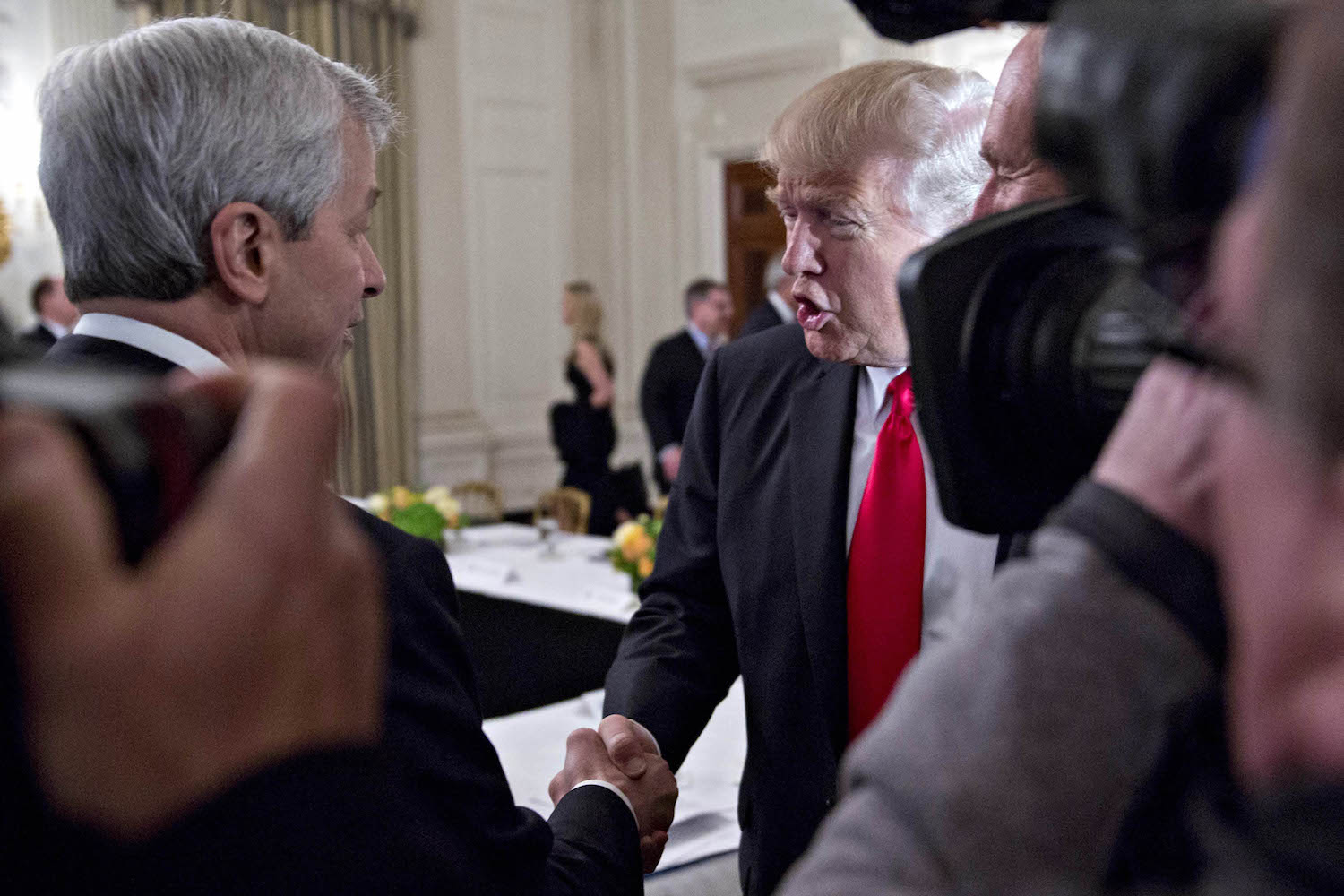
Appearing with some of the most prestigious figures on Wall Street, including JPMorgan Chase head Jamie Dimon and Blackstone chief Stephen Schwarzman, Trump said he wanted to undo much of President Barack Obama’s 2010 financial reform law. (AP Photo)
Former Federal Reserve chairman Paul Volcker quipped in 1999 that “about every 10 years, we have the biggest crisis in 50 years.” A year earlier and about a decade before the crisis that brought on the Great Recession, Long-Term Capital Management, a hedge fund, had collapsed and was bailed out.
A decade is about the time it takes for memories to fade, says conservative financial expert Alex Pollock, and for trauma to be overtaken once again by optimism about new possibilities.
Coincidentally or not, February marked the 10th anniversary of the start of the last financial crisis, according to a timeline maintained by the Federal Reserve Bank of St. Louis. On Feb. 27, 2007, Freddie Mac announced it would no longer buy risky subprime mortgages, which was the first big danger signal that collapse was imminent.
Since then, banks’ political fortunes have waned and federal red tape has tightened around them. Congress’ passage of Dodd-Frank was just the start.
Under Obama, regulators raised capital requirements, limiting the amount of debt big banks could take on.
The Democratic Party became much tougher on banks as Sen. Elizabeth Warren, of Massachusetts, championed tougher enforcement and rose to power along with Sen. Bernie Sanders, I-Vt., who demanded that big banks be broken up by the feds.
Banks would have faced an even more hostile environment if Hillary Clinton had won the presidential election. To avoid being outflanked by Sanders on her left, Clinton campaigned by threatening to tax big banks, and break them up in certain circumstances.
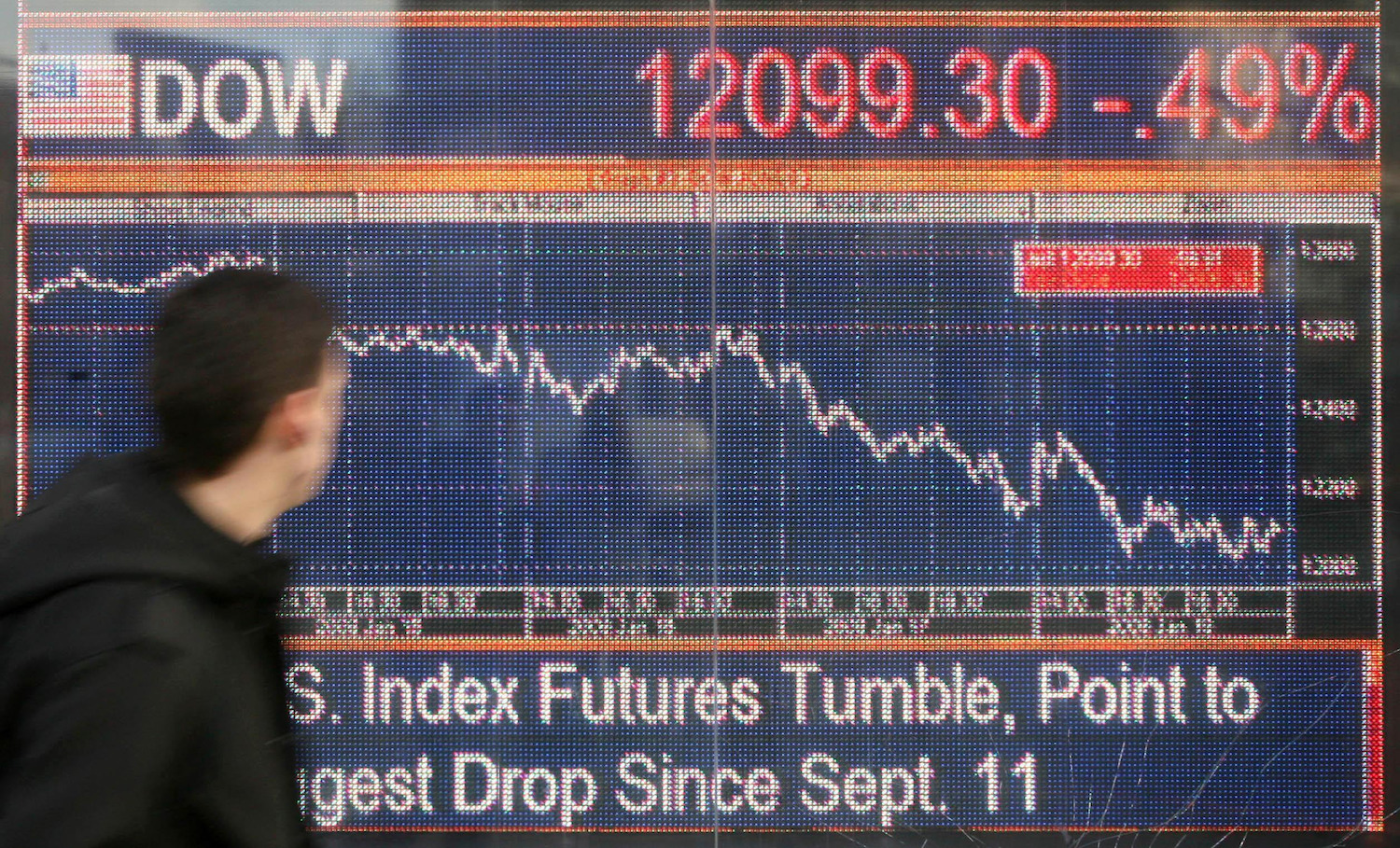
February marked the 10th anniversary of the start of the last financial crisis, according to a timeline maintained by the Federal Reserve Bank of St. Louis. (AP Photo)
With Trump’s election, however, that danger appears to have passed. Instead, legislation and administrative fiat are now likely to give banks freer rein. Republicans have always hated Dodd-Frank, and Trump has pledged to do “a big number” on it, citing the need for fast economic growth.
Wall Street is likely to win victories not just on regulation but also on taxes, housing finance and other big items.
Despite the fact that the Republican Party is now more populist, thanks to Trump, it is still aligned with banks on major issues.
Conservatives say the biggest threat to the financial system is misguided government policies, not rapacious financiers.
As a result, Washington is more likely during the next few years to treat government rather than banks as the bigger threat to the economy.
Republicans’ guru
Republicans have a detailed, written plan to replace Dodd-Frank — something they don’t have for their plans to replace Obamacare and reform the tax code.
It’s called the Financial CHOICE Act, authored by House Financial Services Chairman Jeb Hensarling, of Texas, a fiscal conservative. It was passed by his committee in September. Hensarling is expected to unveil an updated version of the bill in a few weeks for passage by the new Congress.
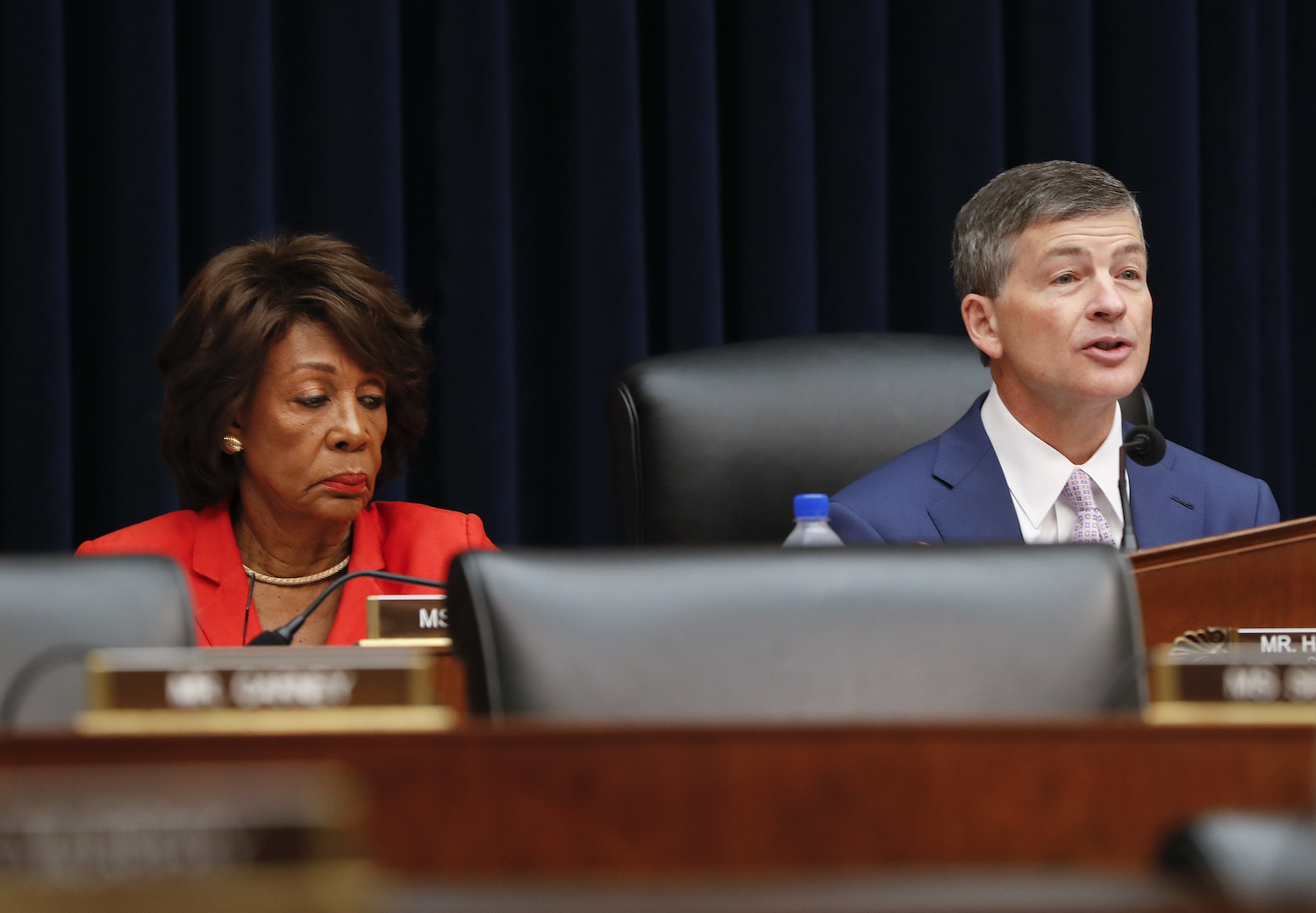
Rep. Maxine Waters (left), of California, Hensarling’s Democratic counterpart on the financial services panel, repeatedly argues that current rules were put in place to prevent another crisis like that of 2008, and that removing them risks another disaster. (AP Photos)
The CHOICE Act would, as its name suggests, give banks a choice. They would be able either to remain under Dodd-Frank’s regulations, or opt into a framework that removes many of those rules in exchange for maintaining higher levels of capital.
The bill is ambitious. It would curb powers granted to regulators by Dodd-Frank, such as the right to name firms as threats to the financial system and to regulate them like megabanks, or the power to seize failing banks and close them down to avert a wider crisis. The bill would also impose more congressional oversight on the Consumer Financial Protection Bureau, the brainchild of Warren that regulates mortgages, credit cards and other financial products. Details of those proposed reforms are still to be determined.
Democrats will try to stop the bill and its constituent parts, and are already preparing for battle. Rep. Maxine Waters, of California, Hensarling’s Democratic counterpart on the financial services panel, repeatedly argues that current rules were put in place to prevent another crisis like that of 2008, and that removing them risks another disaster.
Peter Wallison, a financial expert at the conservative American Enterprise Institute, disagrees.
Wallison, an ally of Hensarling, is cited extensively in the summary for the CHOICE Act. He has argued in books, speeches, white papers and op-eds that the government created the 2008 crisis, and could create the next one, too.
A former Reagan aide, Wallison was a member of the Financial Crisis Inquiry Commission tasked by Congress with investigating what really caused the last financial meltdown. He alone of the commission’s four Republican commissioners dissented from the 2011 report. He blamed the crisis not on Wall Street speculation on subprime mortgages, but on Fannie Mae and Freddie Mac, and their backing of low-quality mortgages. The argument that the government, through Fannie and Freddie, created the financial crisis, is hotly contested and has earned Wallison villain status on the Left. But it’s embraced by Hensarling and other key lawmakers.
Asked about the outlook for finance and what reforms could improve the safety of the financial system, Wallison responded: “Get the goddamn government out of the financial system, so it doesn’t create the next financial crisis.”

Before the crisis, banks were free to trade derivatives, which are contracts based on the value of an underlying asset, such as a subprime mortgage-backed security. (AP Photo)
No one, Wallison included, expects the next crisis to look the same as that of 2008. But he and other conservative analysts see two big sources of instability looming.
One is the Volcker Rule, implemented by Dodd-Frank, named after Paul Volcker, Federal Reserve chairman under Presidents Jimmy Carter and Ronald Reagan. It bans banks from speculation or from owning hedge funds or private equity funds. The idea is that banks, which receive federal insurance for deposits, should not use those funds to generate high-risk trading profits.
Bankers warn that this rule combined with others, preventing the biggest banks from buying and selling bonds, would exclude powerful stabilizing forces from the market at a moment of stress.
“When there is an urgent need for this liquidity, which could be triggered by innumerable sets of circumstances, the inability of the market to provide this liquidity will turn a simple problem into a major crisis,” Wallison warned.
Critics of the Volcker Rule got a big boost in December when economists at the Federal Reserve’s Board of Governors released a paper finding that bonds are indeed less liquid during periods of stress because of the rule.
The other major concern of conservatives is with Dodd-Frank’s reform of swaps markets.
Before the crisis, banks were free to trade derivatives, which are contracts based on the value of an underlying asset, such as a subprime mortgage-backed security. Derivatives were originally used by businesses to hedge against risks. Farmers use derivatives, for example, to insure against crop-destroying weather, and ranchers, in turn, use them to hedge against the possibility that farms hit by storms jack up the price of feed.

Bankers warn that the Volcker Rule combined with others, preventing the biggest banks from buying and selling bonds, would exclude powerful stabilizing forces from the market at a moment of stress. (AP Photo)
In the run-up to the crisis, banks used swaps to bet on mortgage-backed securities, a use that the crisis investigators later said led to the inflation of the subprime bubble. Accordingly, Dodd-Frank imposed new regulation on swaps trades. Rather than allow banks to trade directly with each other, the law required that most swaps be traded through clearinghouses, which are third-party organizations that act as buyers and sellers, and that the transactions be monitored by a Commodity Futures Trading Commission with new powers.
The problem, as seen by Hester Peirce, a researcher at the libertarian Mercatus Center, is that those clearinghouses now run the risks involved in swaps trades, and could themselves be the source of contagion if they were to fail. The clearinghouses “are becoming very big. And it’s pretty hard to manage the risk,” said Peirce, who was put forward by Republicans as a nominee for commissioner at the Securities and Exchange Commission under Obama, but was not confirmed.
Reverse it
Under the logic that the government is the biggest threat to the financial system, the CHOICE Act cuts it back.
To supplant agency rules and regulator oversight, the reform would require significantly higher capital levels. Banks opting out of Dodd-Frank’s rules would be required to maintain a capital level of 10 percent, using a stringent measure of capital. That requirement is, in effect, a limit on bank indebtedness. Banks must finance their operations with at least 10 percent equity, such as shares or other ownership stakes, and can borrow only $9 for every $1 of equity.
While Obama’s regulators boast that they forced big banks to double their capital levels, many advocates see current levels as still too low.
The eight megabanks have an average of about 5.75 percent capital, according to Federal Deposit Insurance Corporation vice chairman Thomas Hoenig, using a metric similar to the one mandated in the CHOICE Act. In other words, the bill is asking those giant banks, the ones viewed as perhaps too-big-to-fail, to double their capital levels yet again.
There are a few reasons, according to the leading crusader for higher capital levels, Stanford professor Anat Admati, one of the authors of the 2013 book The Bankers’ New Clothes: What’s Wrong With Banking and What to Do About It.

The CHOICE Act would impose more congressional oversight on the Consumer Financial Protection Bureau, the brainchild of Warren that regulates mortgages, credit cards and other financial products. (AP Photo)
One is that higher capital helps guard against failures, and accordingly the kind of panics that can drag down the economy. In theory, a bank with a capital level of 10 percent could see the value of its assets decline by 9 percent without having to default on any loans, whereas a less well-capitalized bank would default, causing confusion and contagion.
Another reason is that having investors with more “skin in the game,” that is, money at risk, should boost corporate oversight of the bank, creating greater market discipline.
Admati said she generally favors requiring higher minimum capital levels at banks, while imposing fewer rules, such as the liquidity rules and stress tests imposed by regulators. “I want to go much more in that direction, and believe that you can get rid of a lot of other stuff if you do,” she said.
But she warned that capital requirements are easily gamed. “If you’re going to put your eggs in that basket, you better know what 10 percent means,” she said.
Admati has backed capital levels as high as 30 percent, a throwback to the 1800s. Neel Kashkari, president of the Federal Reserve Bank of Minneapolis, who last year headed a project examining the problem of too-big-to-fail banks, called for a 15 percent requirement. So Hensarling’s standard is not generally seen as extreme.
But megabanks, who like to fund operations by borrowing, disagree. For them, debt is cheaper than equity because it is taxed favorably and because, Admati and others argue, they can borrow at lower rates because of lenders’ perception that they are in line for government assistance if they default.
Bank concerns
That is one reason big banks appeared ambivalent about the Hensarling bill after it was advanced last year. Wall Street is also skeptical of GOP legislative language to reform the Federal Reserve, included last year in the Hensarling bill.
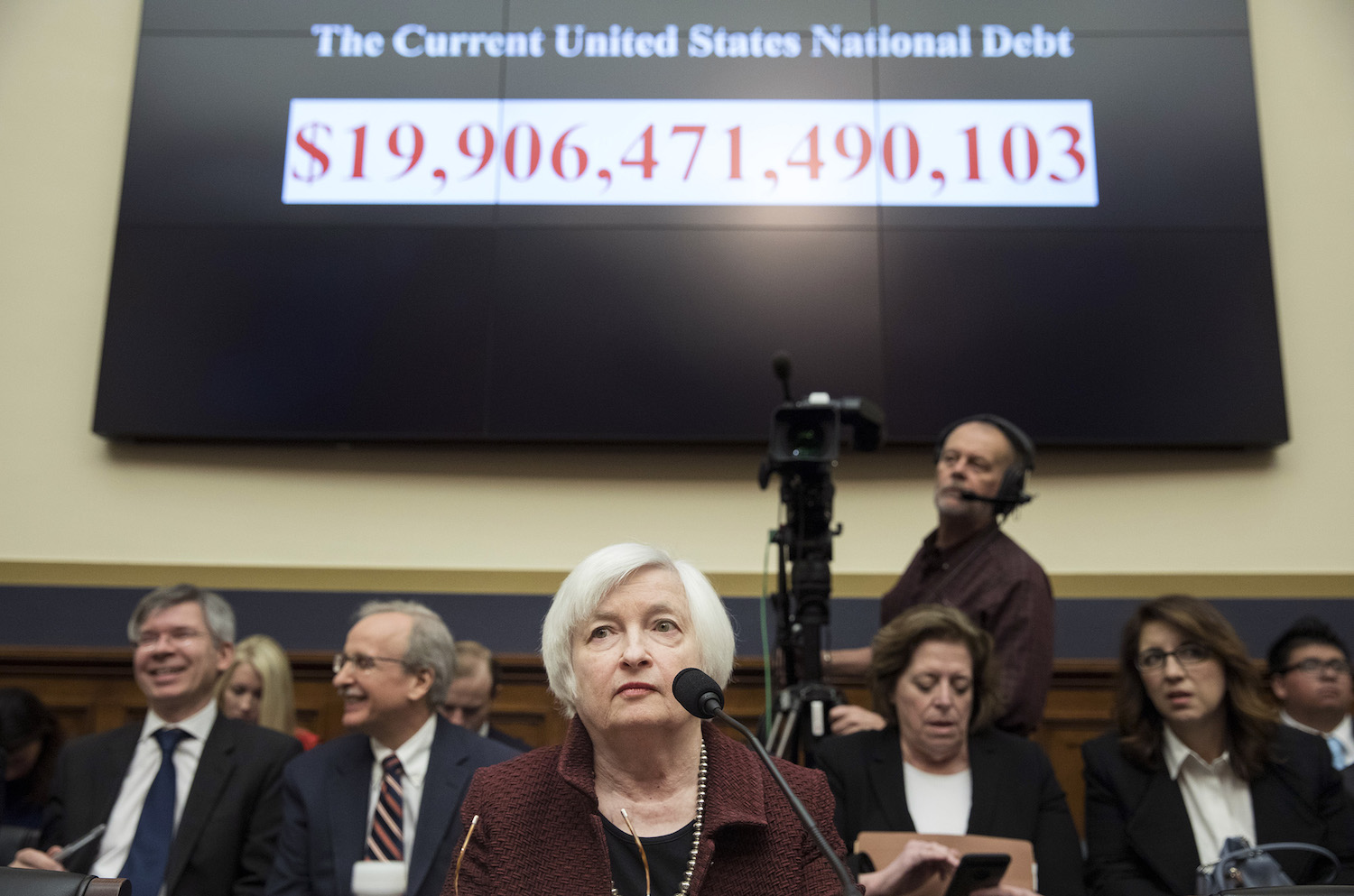
Hensarling’s bill would require the Fed to spell out a rule guiding its monetary policy, explain it to Congress and face a Government Accountability Office audit if it deviates from its rule. (AP Photo)
Although banks have long chafed at Fed regulations, Wall Street’s biggest banks defend its independent conduct of monetary policy. They see the Fed’s management of interest rates as more reliable than alternatives, such as congressional meddling, and better for their own business.
Hensarling’s bill would require the Fed to spell out a rule guiding its monetary policy, explain it to Congress and face a Government Accountability Office audit if it deviates from its rule. The idea is to make the Fed’s communications more predictable. Fed chairwoman Janet Yellen has argued that the provision would put short-term political pressures on Fed decision-making.
The U.S. Chamber of Commerce says it will defend Fed independence. Tom Quaadman, executive vice president of the chamber’s financial regulatory unit, praised Hensarling’s legislation as a helpful starting point and added that “any process like this is something that there’s a lot of give and take that has to happen.”
There is plenty in the legislation to entice banks. They love a provision that helps them in a battle against the retail sector. Hensarling’s legislation, last time, included repeal of the Durbin Amendment, a Dodd-Frank measure that capped fees on debit card transactions. Removing the cap banks would make a $6 billion-$8 billion difference to banks annually, the industry says.
Personnel is policy
While the CHOICE Act is the leading vehicle for reforming Dodd-Frank, the coming GOP regulatory rollback doesn’t depend on it.
Senators hint that they may use a procedural tool known as budget reconciliation to avoid a filibuster and pass legislation with only 51 votes. That could allow Republicans to target specific Dodd-Frank provisions without needing Democratic help. While a broad Dodd-Frank replacement couldn’t be done through reconciliation, narrow changes could.
Democrats could be pressured to join Republicans in cutting Dodd-Frank. Ten Democratic senators face re-election battles next year in states Trump won last November, Quaadman noted, so they have a strong incentive to work with Republicans or face accusations that they voted against job creation.
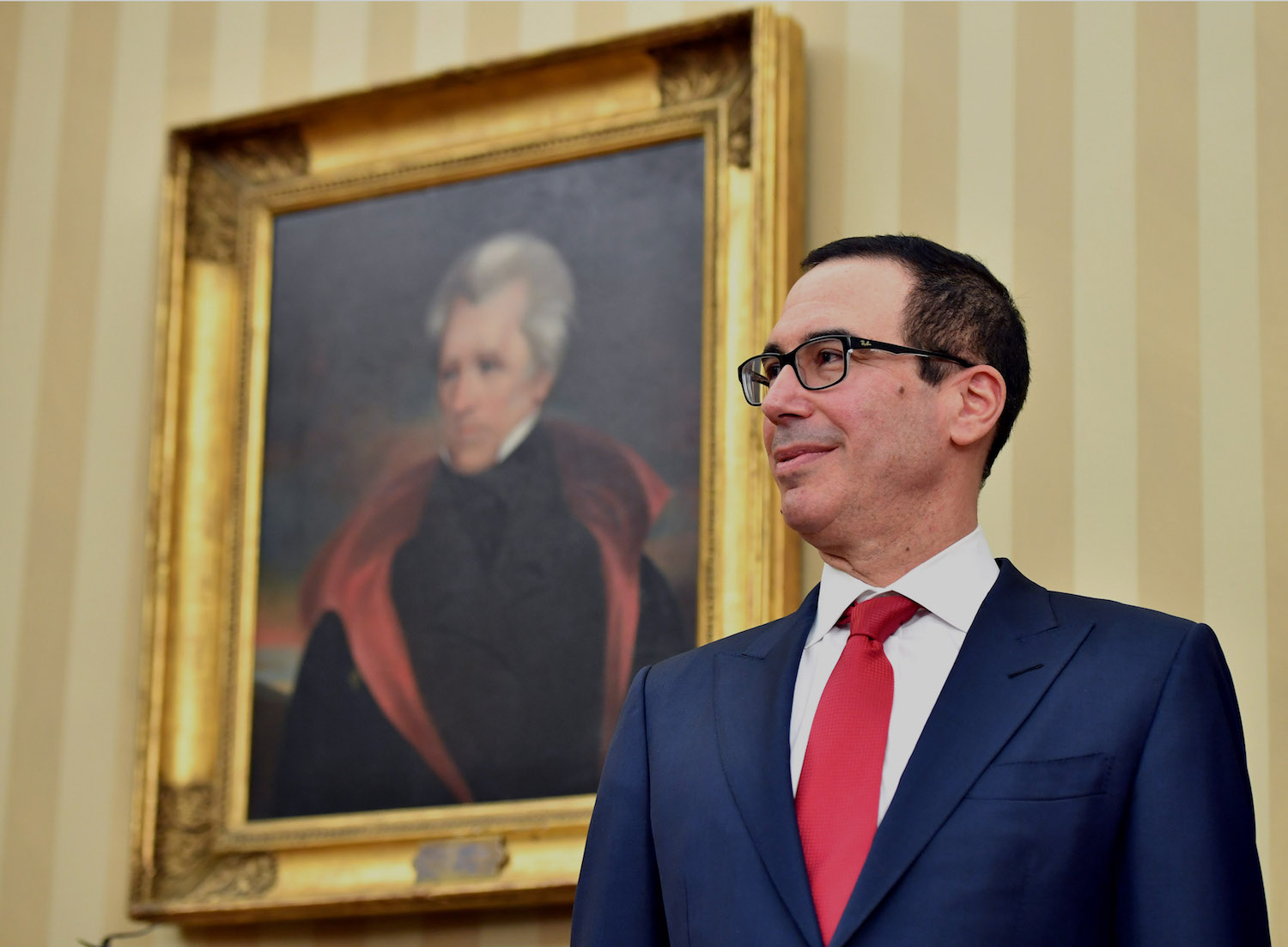
In particular, National Economic Council Director Gary Cohn, formerly president of Goldman Sachs, and Treasury Secretary Steven Mnuchin (above), a former financier, regional banker and Goldman Sachs investment banker, are seen as allies. (AP Photo)
“There’s a number of different ways, to quote our president, that you can ‘do a number’ on Dodd-Frank to get our capital markets healthy and functioning again,” Hensarling said last week in an CNBC interview. He explained that “part of it’s going to come through executive orders … much of it can be undone by pen and phone.”
Trump’s administration, including its top positions at the Treasury and at independent regulatory agencies, is still getting staffed up. But appointees already in position meet the approval of the financial industry.
In particular, National Economic Council Director Gary Cohn, formerly president of Goldman Sachs, and Treasury Secretary Steven Mnuchin, a former financier, regional banker and Goldman Sachs investment banker, are seen as allies. So is Jay Clayton, a Wall Street lawyer Trump nominated to run the Securities and Exchange Commission.
They will have the power not just to influence legislation, but also to review post-crisis rules and shape their implementation. Because the rules are so complicated and interconnected, there is scope for regulators to provide relief with subtle changes, or, in Sen. Warren’s nightmare, bend the rules to give favored banks special advantages.
An appointee such as Mnuchin would have faced long odds for confirmation if Democrats had gained control of the upper chamber. Warren and other liberal Democrats banded together in late 2014 to block Obama’s nomination of the investment banker Antonio Weiss to a top spot at the Treasury, simply because he had a background in the industry.
Warren, Sanders and other liberals portrayed the problem as one of Wall Street’s political influence in Washington. In their telling, even after the crisis and Dodd-Frank, big banks remain too big to fail, and bank executives implicated in the failures of the mortgage market evaded legal responsibility. Replacing bank-friendly regulators with hawkish Wall Street critics was the only way to fix the problem.
Under Trump, for now, the opposite has happened. Former Goldman Sachs employees run the show.
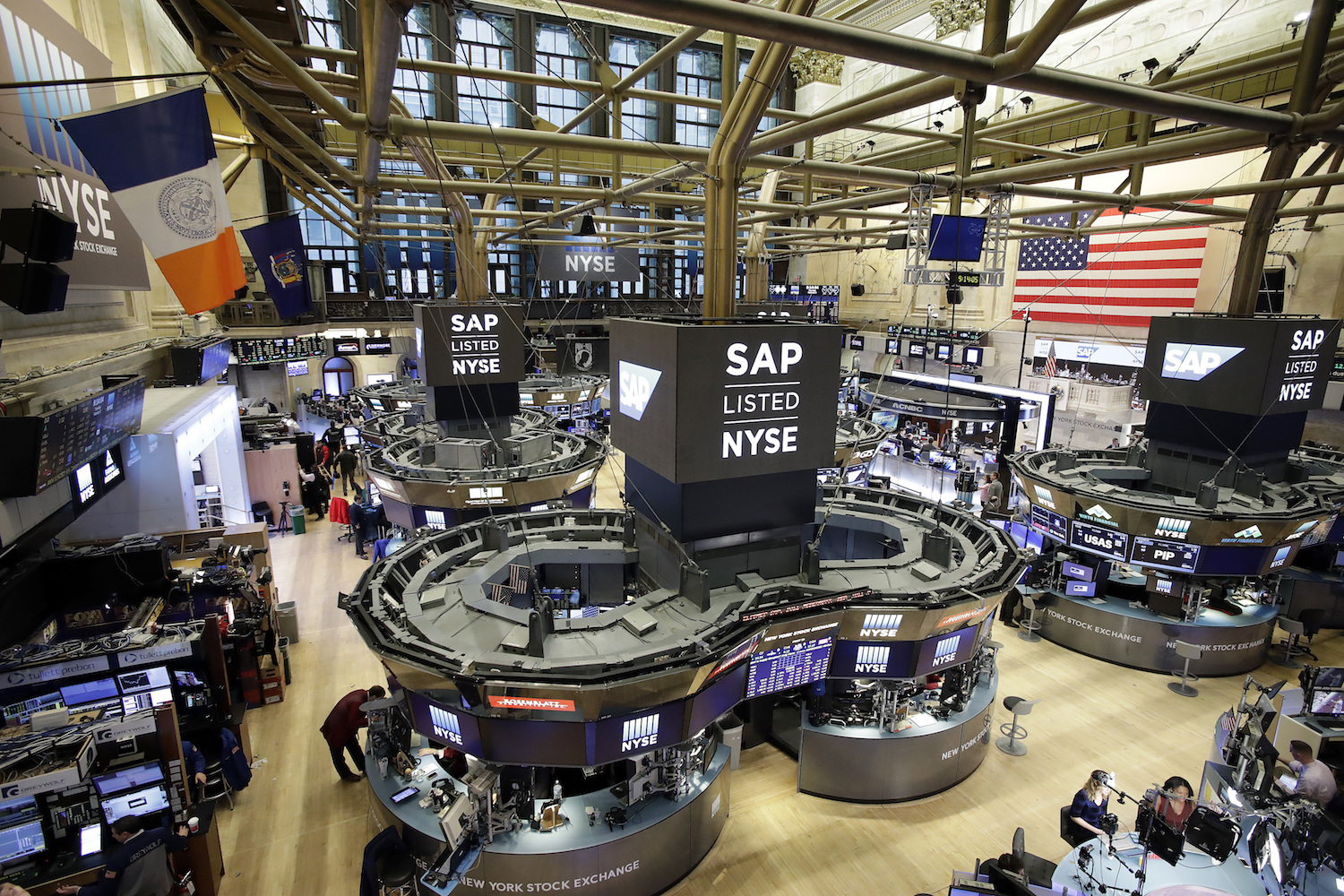
Although banks have long chafed at Fed regulations, Wall Street’s biggest banks defend its independent conduct of monetary policy. (AP Photo)
“These guys know the issues and know what some of the problems are,” Quaadman said, “And they’re not shrinking violets.”
One of Mnuchin’s priorities, he said during confirmation hearings, would be to revisit the Volcker Rule. As head of the Financial Stability Oversight Council, the super-group of regulators charged with assessing financial risks throughout the economy, he would make sure banks could provide liquidity, he told senators.
The bigger picture
Even if banks get stiffed on regulatory relief, they are in line for other policy victories in the Trump era.
One is tax reform.
It is “definitely not going out on a limb to say the environment has changed dramatically and has become incredibly more favorable,” said Robert Willens, a business tax consultant and former tax expert at Lehman Bros investment bank. “It’s a great time to be a bank.”
Just three years ago, the top Republican tax-writer in the House proposed instituting a tax on bank size, a concept endorsed by Clinton during her presidential run.
Now, bank taxes are off the table. Instead, banks would benefit enormously from the corporate rate cut backed by congressional Republicans and Trump.

Banks’ overseas profits have been immediately taxable, unlike other profits, which are taxed only when they’re brought back to the U.S. (AP Photo)
Megabanks would also benefit from the House Republican tax reform, which would end taxation of foreign earnings. Banks’ overseas profits have been immediately taxable, unlike other profits, which are taxed only when they’re brought back to the U.S. It has taken special legislation to prevent those profits from being taxed again, meaning it was at political risk. That measure, passed in 2015, was projected to cost the Treasury nearly $80 billion over 10 years, according to congressional scorekeepers.
But under House Speaker Paul Ryan’s reform, banks would never face that tax again. It “would be a major boon for the multinational banks,” said Bob McIntyre, director of Citizens for Tax Justice, a progressive group that aims to prevent corporations dodging taxes.
Republican plans would not aid all financial firms. Private equity firms could be hurt by the move to tax businesses on cash flow, rather than on profits. This would involve limiting the ability of firms to deduct interest payments from taxable income, which would crimp the private equity model of taking over companies and having them issue debt to reorganize.
But, on balance, the tax outlook is favorable for banks.
Prepare for big things
In late 2014, the banking industry succeeded in getting a minor deregulatory measure attached to a must-pass government funding bill. The provision, reportedly authored by Citigroup lobbyists, undid a Dodd-Frank prohibition on banks with insured deposits trading certain kinds of swaps.
The inclusion of the roll-back in the bill threatened to shut down the government. As the Obama White House and then-Senate Minority Leader Harry Reid pushed for passage, Warren and liberal members of the House, including Minority Leader Nancy Pelosi, fought against them, seeking to kill it.
The CHOICE Act puts in play many policies far more consequential. With the stroke of the pen, Trump can also do more, and not even a government shutdown can stop him.
Not quite 10 years since the collapse of Lehman Bros., the political fortunes of Wall Street have definitely changed for the better.

